Abstract
Syngeneic mice adoptively immunized intravenously with 25 million washed node and spleen cells from donors vaccinated subcutaneously with formolized influenza A PR8 had a higher mortality with influenza pneumonia after challenge with homologous virus than occurred in recipients of similar cells from unsensitized donors, and this increased mortality was prevented by treatment of the sensitized cells with antithymocyte serum. Mice adoptively immunized with cells from donors vaccinated with formolized influenza A PR8 also had a higher mortality than recipients of unsensitized cells after challenge with heterologous influenza B Lee. Mice who received PR8-sensitized cells and survived challenge with influenza B Lee developed antibody only to the challenge virus, and serum antibody titers to the challenge virus in surviving recipients of sensitized cells were similar to those of recipients of unsensitized cells in all studies. Influenza mortality of recipients of antibody-containing mouse serum after homologous virus challenge was similar to that of recipients of antibody-free mouse serum in this model. Washed node and spleen cells from donor mice who had survived respiratory infection or received subcutaneous vaccination with live influenza A PR8 and those from donor mice given typhoid vaccine subcutaneously all failed to alter mortality from that observed in recipients of unsensitized cells after challenge with influenza A PR8. These results suggest that subcutaneous vaccination with inactivated influenza establishes a reactivity of the cell-mediated immunologic system which can increase the severity of influenza infection of the respiratory tract under certain conditions, and that sensitization by live influenza fails to produce this effect.
Full text
PDF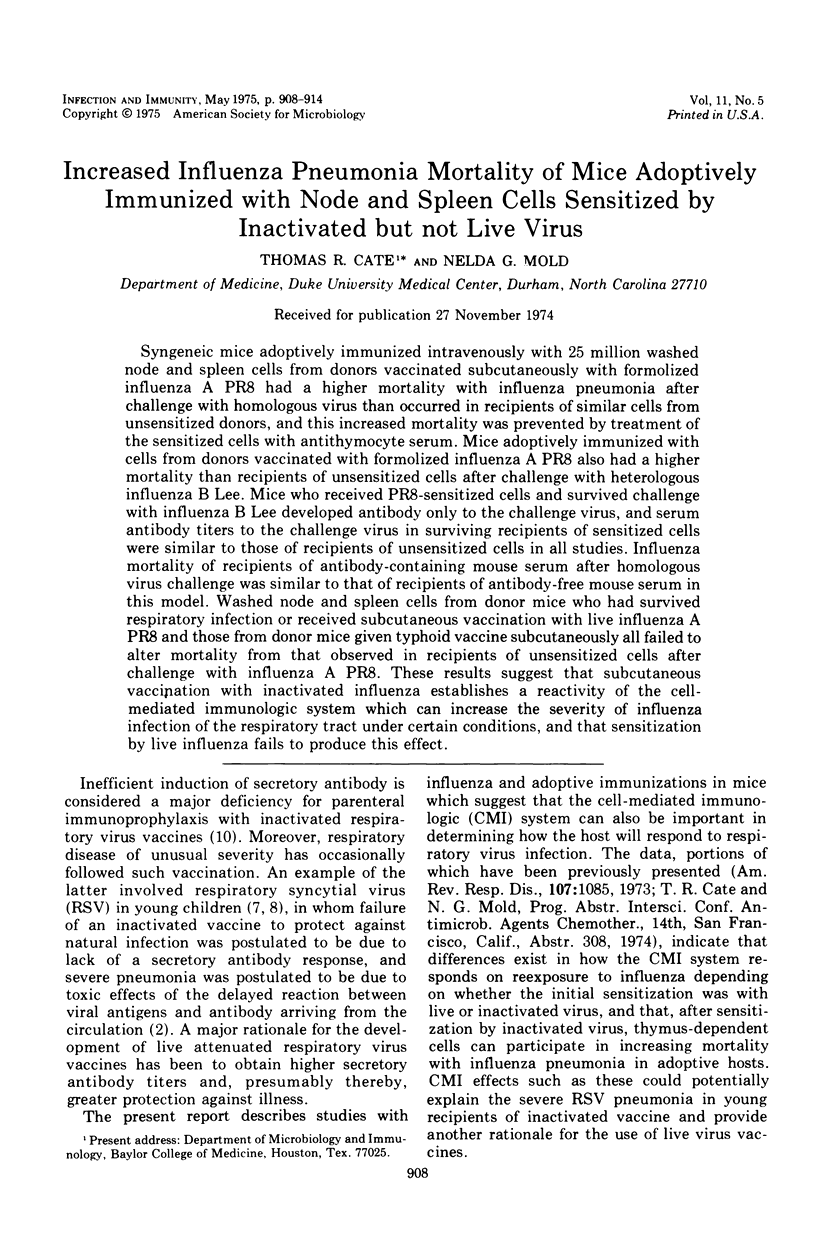
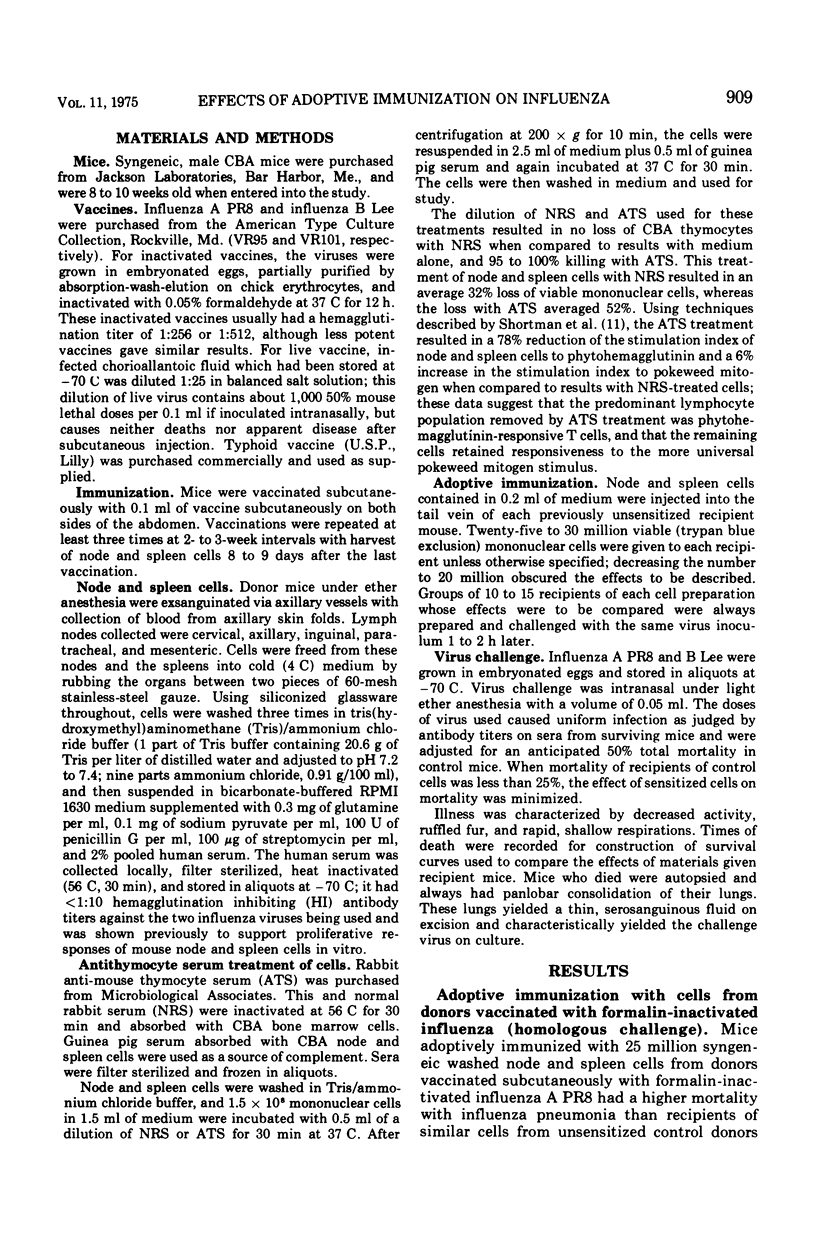
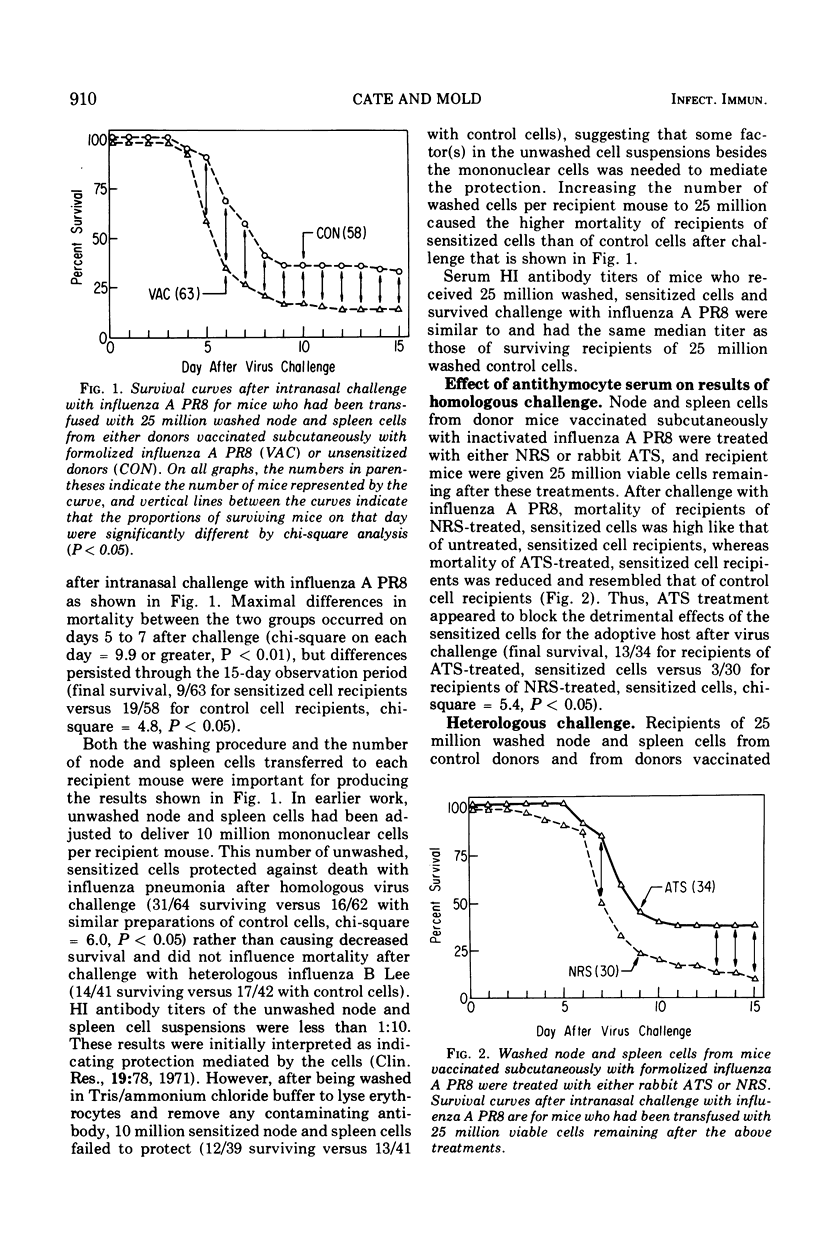
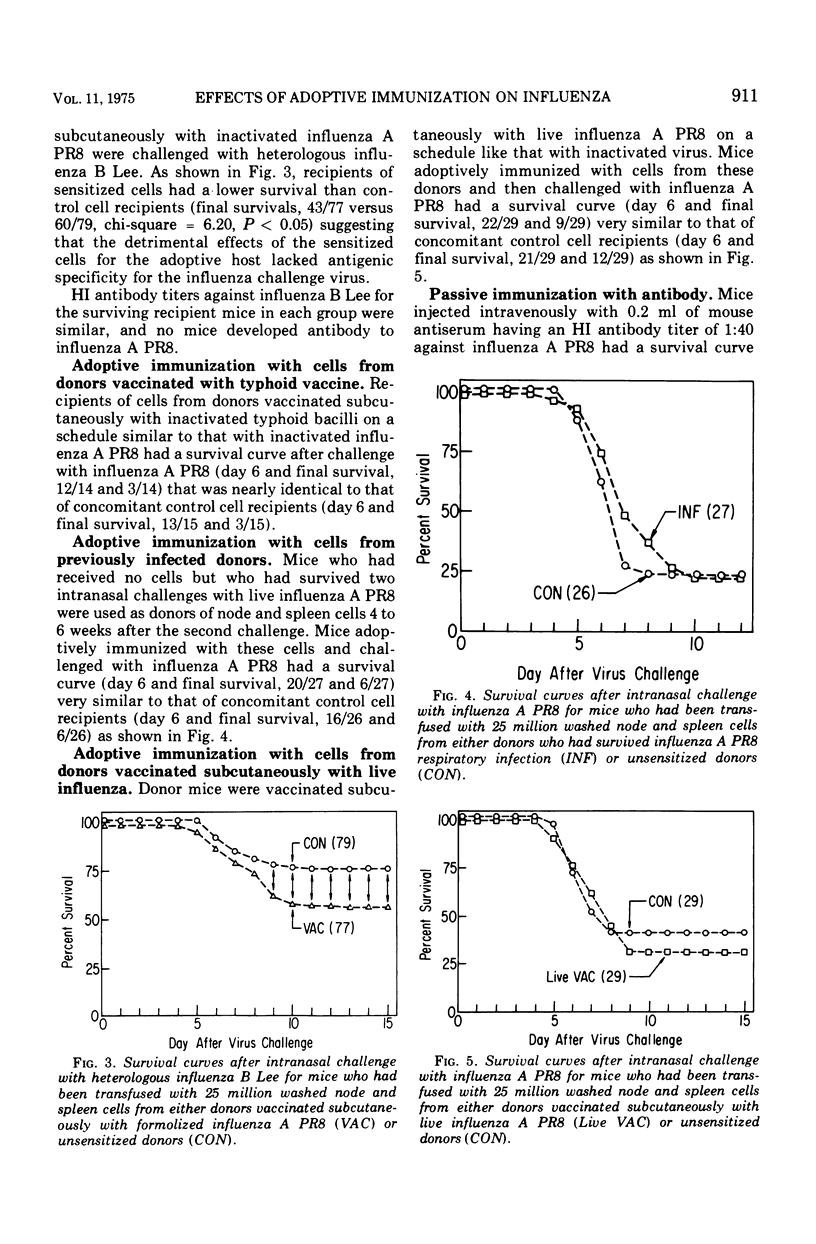
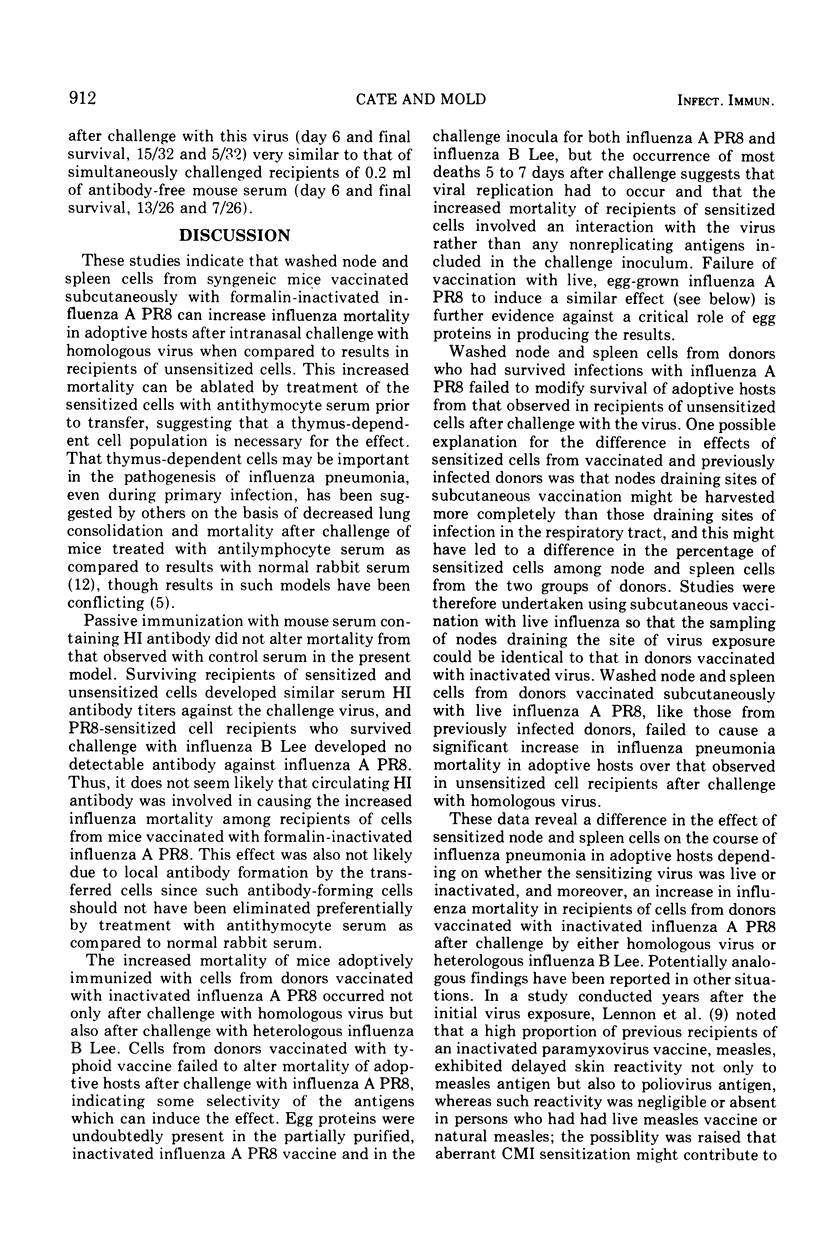
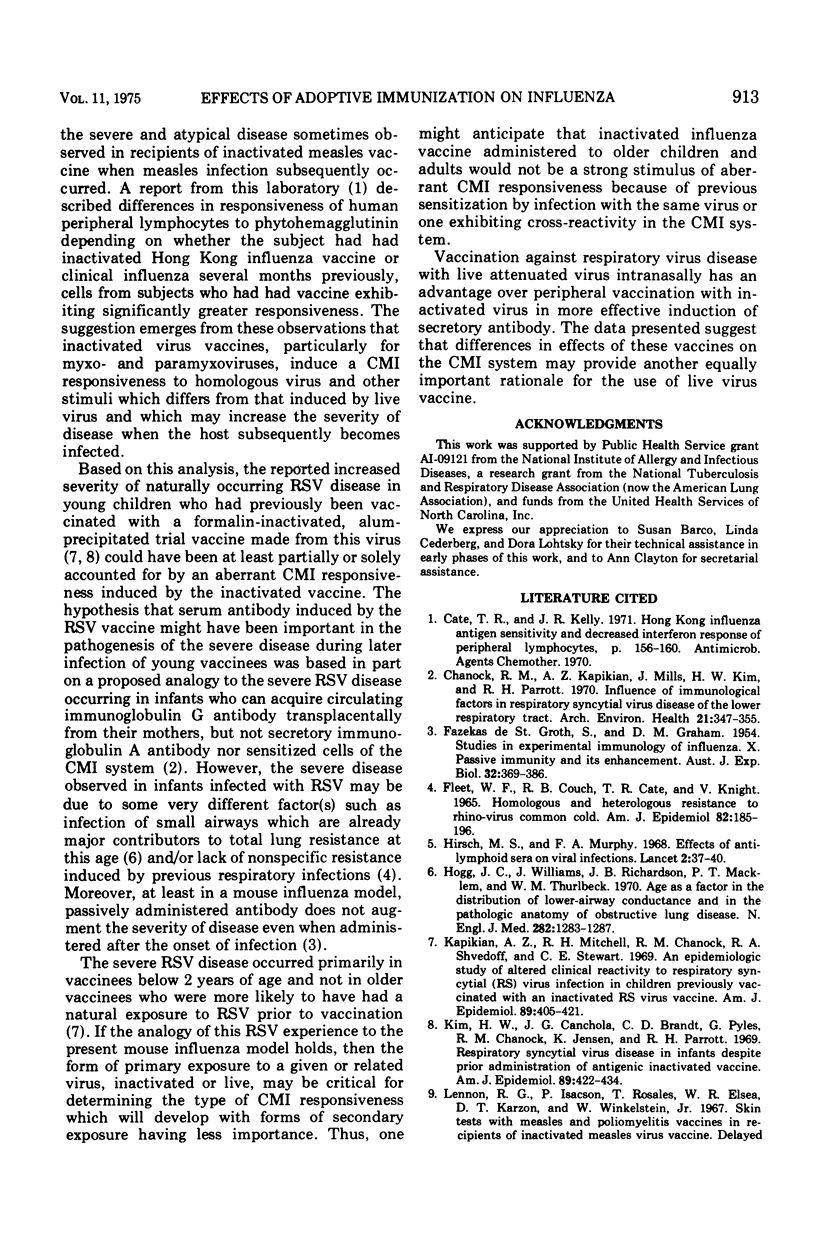
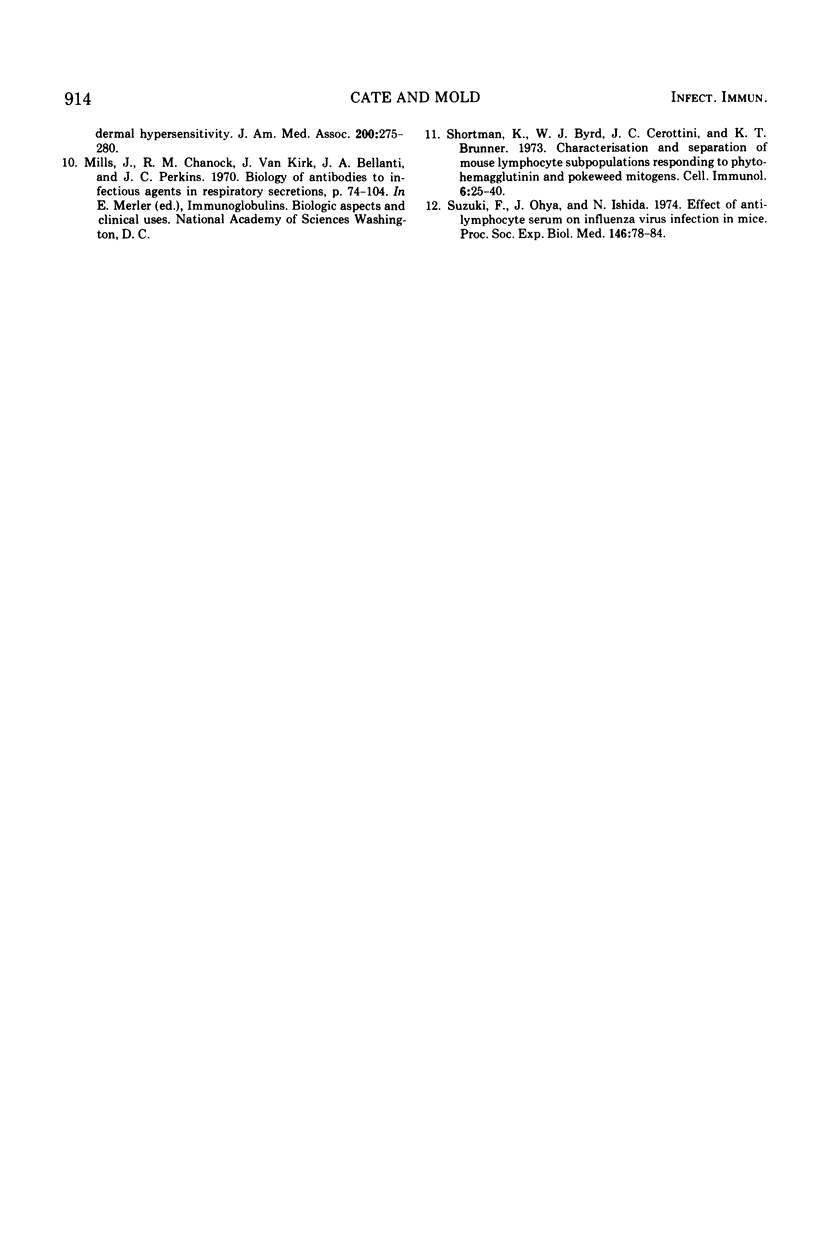
Selected References
These references are in PubMed. This may not be the complete list of references from this article.
- Chanock R. M., Kapikian A. Z., Mills J., Kim H. W., Parrott R. H. Influence of immunological factors in respiratory syncytial virus disease. Arch Environ Health. 1970 Sep;21(3):347–355. doi: 10.1080/00039896.1970.10667249. [DOI] [PubMed] [Google Scholar]
- DE ST. GROTH S. F., GRAHAM D. M. Studies in experimental immunology of influenza. X. Passive immunity and its enhancement. Aust J Exp Biol Med Sci. 1954 Jun;32(3):369–386. doi: 10.1038/icb.1954.40. [DOI] [PubMed] [Google Scholar]
- Fleet W. F., Couch R. B., Cate T. R., Knight V. Homologous and heterologous resistance to rhinovirus common cold. Am J Epidemiol. 1965 Sep;82(2):185–196. doi: 10.1093/oxfordjournals.aje.a120543. [DOI] [PubMed] [Google Scholar]
- Hirsch M. S., Murphy F. A. Effects of anti-lymphoid sera on viral infections. Lancet. 1968 Jul 6;2(7558):37–40. doi: 10.1016/s0140-6736(68)92904-8. [DOI] [PubMed] [Google Scholar]
- Hogg J. C., Williams J., Richardson J. B., Macklem P. T., Thurlbeck W. M. Age as a factor in the distribution of lower-airway conductance and in the pathologic anatomy of obstructive lung disease. N Engl J Med. 1970 Jun 4;282(23):1283–1287. doi: 10.1056/NEJM197006042822302. [DOI] [PubMed] [Google Scholar]
- Kapikian A. Z., Mitchell R. H., Chanock R. M., Shvedoff R. A., Stewart C. E. An epidemiologic study of altered clinical reactivity to respiratory syncytial (RS) virus infection in children previously vaccinated with an inactivated RS virus vaccine. Am J Epidemiol. 1969 Apr;89(4):405–421. doi: 10.1093/oxfordjournals.aje.a120954. [DOI] [PubMed] [Google Scholar]
- Kim H. W., Canchola J. G., Brandt C. D., Pyles G., Chanock R. M., Jensen K., Parrott R. H. Respiratory syncytial virus disease in infants despite prior administration of antigenic inactivated vaccine. Am J Epidemiol. 1969 Apr;89(4):422–434. doi: 10.1093/oxfordjournals.aje.a120955. [DOI] [PubMed] [Google Scholar]
- Shortman K., Byrd W. J., Cerottini J. C., Brunner K. T. Characterisation and separation of mouse lymphocyte subpopulations responding to phytohemagglutinin and pokeweed mitogens. Cell Immunol. 1973 Jan;6(1):25–40. doi: 10.1016/0008-8749(73)90003-8. [DOI] [PubMed] [Google Scholar]
- Suzuki F., Oya J., Ishida N. Effect of antilymphocyte serum on influenza virus infection in mice. Proc Soc Exp Biol Med. 1974 May;146(1):78–84. doi: 10.3181/00379727-146-38047. [DOI] [PubMed] [Google Scholar]


